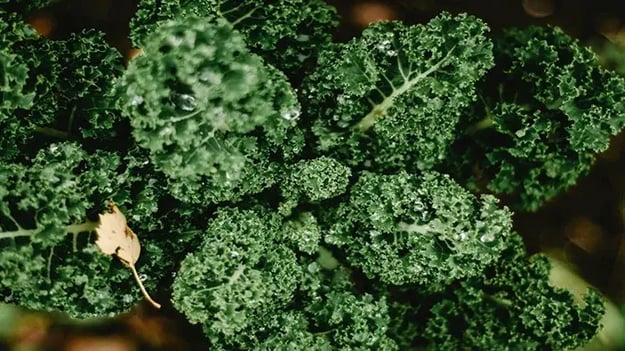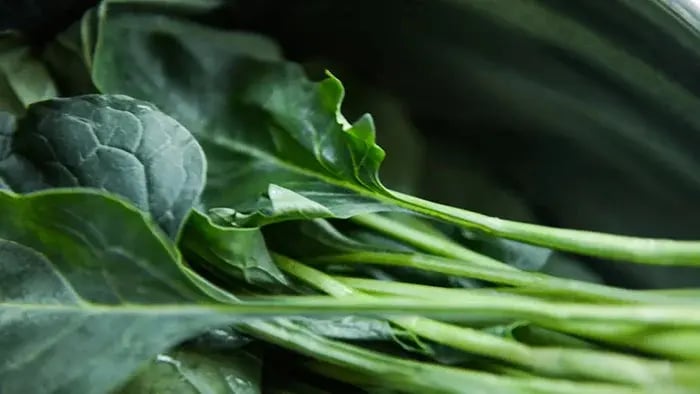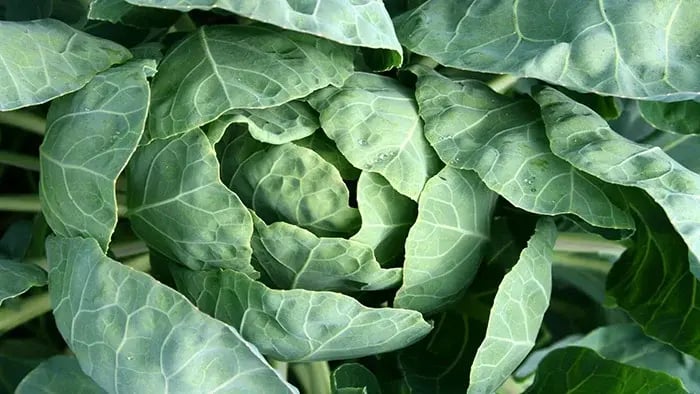- Kale
- Lettuce
- Collard Greens
- Broccoli
- Cabbage
Many parents are unaware that vitamin K is essential and plays a crucial role in a balanced diet. Vitamin K is responsible for healing wounds and clotting of blood, and it also supports stronger bones.
During childhood, when children while playing get slight injuries or cuts, there is a gush of blood. As soon as the body receives the message that there has been excessive blood flow somewhere, it starts the process of clotting blood from the injured area to preserve the wound and stop the blood loss. This is only possible because of vitamin K in the body, which helps in the clotting of blood. Prothrombin is a protein found in vitamin K for blood clots. Osteocalcin is another protein found in vitamin K that produces healthy bone tissues.
Understanding Vitamin K Deficiency In Children
Vitamin K deficiency is extremely dangerous in kids because one can have excessive blood flow from various injuries. In case of internal bleeding or external heavy injuries, it can be fatal to kids, leading to death. One of the significant symptoms is excessive blood flow, which shows vitamin K deficiency.
These scary symptoms and possibilities can be easily thrown out the window with a proper balanced diet and Vitamin K nourishment meal planning. All the different kinds of greens are always associated with Vitamin K. There are other types of leafy greens that you can try aside from spinach to serve nutrients to your kids. Keep reading to know more!
5 Vitamin K Dense Foods To Add To Your Kids' Diet
1. Kale

Kale has lots of vitamin K content in it, but it has not been a favorite for kids to devour. The best way to mellow down the bitter taste of kale is to make green smoothies for your kids every day as a tonic after lunch. Although greens taste bitter, kale has many nutritious properties to help your kids grow more robust and have an excellent immune system. Kale has more than 1000% of the daily value a child needs for its daily intake of 1.4 milligrams of Vitamin K. Kale is so abundant in the vitamin because of phylloquinone.
2. Lettuce
Lettuce is a good choice for healthy eating for kids and adults. It is a popular ingredient in different kinds of salads. You can sneak in an extra leaf of lettuce in your children's burgers or sandwiches to give them their share of Vitamin K. It offers 130 micrograms of vitamin K and perfectly matches brunch options. Add it to your child’s smoothie or make healthy sandwiches from lettuce wrap. Lettuce can also be used as a refreshing side with a little bit of pickle as it is also high in water content and will help your kid change their taste palette easily while having a balanced meal.
3. Collard Greens

Collard Greens are famous in North American cuisine, and they can be extremely delicious and juicy. The texture of collard greens is very slimy and sticky, just like Malabar spinach, also known as "Poi Saag" in Hindi. The best way to cook this green is to put it in a soup or try different North American cuisine dishes. These greens also contain 900% extra vitamin K compared to the daily intake, which is 1.3 milligrams. One can also try different kinds of curries, including this green, making sure your kid has a nutrient-dense diet.
4. Broccoli
Broccoli is known as a superfood for a reason. Broccoli is not only the powerhouse of various minerals and vitamins but also a great source of vitamin K. Broccoli can be made into various kinds of clever snacks that your kids will love, such as roasted broccoli chips or different types of curries. Broccoli can be a good vegetable for a salad with a regular or a spicy dressing. Broccoli can be a good side on the lunch table and help your kids to eat healthily. You can also make broccoli soup, which you can make broccoli puree; your kids will hardly know the difference.
5. Cabbage

Cabbage is used as a healthy ingredient all over the world, and you can also experiment with various cuisines. For example, you can make kimchi from Korean cuisine and incorporate cabbage into your child's diet, while you can also make cabbage curry or bhujia from Indian cuisine. Cabbage is a simple vegetable that can be made into various forms and can also be eaten raw. Cabbage contains 85 micrograms of Vitamin K, which is about 11% of daily intake. Cabbage is a good source of vitamin K and can be a good snack for your kids.
Vitamin K is an essential nutrient for your child's immune system. Without it, blood clotting in the body becomes very complicated, making your kid more prone to injuries. Vitamin K is an essential ingredient you should consider when planning meals to make your kids more robust and resistant to these injuries.
Smriti is a content writer who creates clear, practical, and informative content backed by science and relevant data. With a strong understanding of structured writing, she breaks down complex topics into simple, actionable insights. Her work is focused on helping readers prepare, learn, and grow with confidence and clarity.
The views expressed are that of the expert alone.
The information provided in this content is for informational purposes only and should not be considered a substitute for professional medical advice, diagnosis, or treatment. Always seek the advice of your physician or another qualified healthcare provider before making any significant changes to your diet, exercise, or medication routines.
















